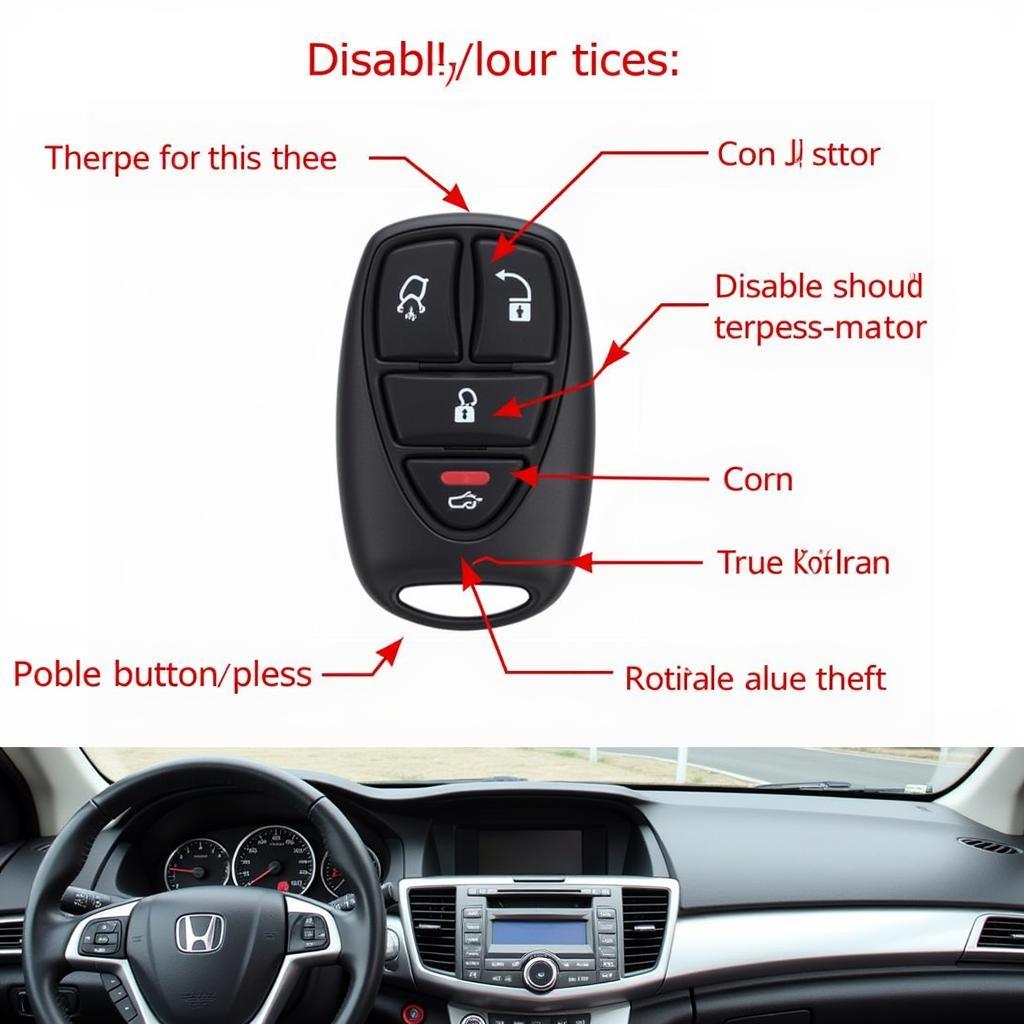Experiencing a persistent brake pad warning light on your Audi A6 4G? Don’t ignore it! This warning typically signals worn brake pads, a crucial safety component requiring immediate attention. This guide explores common causes behind the Audi A6 4G brake pad warning and provides practical solutions to get you back on the road safely.
Understanding the Audi A6 4G Brake Pad Warning System
The Audi A6 4G is equipped with an advanced electronic brake pad wear sensor system. When the brake pads wear down to a critical point, the sensor triggers the warning light on your dashboard.
This system plays a crucial role in:
- Enhancing Safety: It provides timely alerts, preventing potentially dangerous situations caused by severely worn brake pads.
- Optimizing Maintenance: The warning light allows for proactive brake pad replacement, preventing costly brake rotor damage and ensuring optimal braking performance.
Common Causes of the Audi A6 4G Brake Pad Warning Light
While worn brake pads are the most common culprit, several other factors can trigger the brake pad warning light on your Audi A6 4G:
- Worn Brake Pad Sensors: The sensors themselves can wear out or get damaged over time, leading to a false warning.
- Faulty Wiring: Damaged or corroded wiring connecting the sensors to the vehicle’s electrical system can disrupt the signal, causing the warning light to illuminate.
- Brake Fluid Issues: Low brake fluid levels can trigger the warning light, often indicating a leak in the braking system.
- Control Module Malfunction: In rare cases, a malfunctioning brake control module can lead to erroneous warning signals.
Diagnosing the Problem: Steps to Take
Before replacing any components, it’s essential to accurately diagnose the root cause of the warning light:
-
Check the Brake Pads: Visually inspect the brake pads for wear. If they appear thin or worn close to the metal backing plate, replacement is necessary.
-
Inspect the Brake Pad Sensors: Examine the brake pad wear sensors for any signs of damage, such as cuts, fraying, or disconnection.
-
Check Brake Fluid Levels: Open the brake fluid reservoir and check the fluid level. If it’s below the minimum mark, add the recommended brake fluid. However, persistently low fluid levels indicate a leak requiring immediate professional attention.
-
Scan for Fault Codes: If the visual inspection doesn’t reveal the issue, connecting a diagnostic scanner, such as those offered by Ross-Tech (VCDS), can retrieve specific fault codes stored in the vehicle’s computer. These codes provide valuable insights into the underlying problem.
Expert Insight from David Miller, ASE Certified Master Technician: “Using a diagnostic tool like VCDS is invaluable when diagnosing brake system issues on modern vehicles. It allows you to pinpoint the exact problem area, saving time and unnecessary component replacements.”
-
Seek Professional Help: If you’re uncomfortable performing these diagnostic steps or the issue persists, it’s best to consult a qualified mechanic specializing in Audi vehicles. They have the expertise and tools to diagnose and resolve the problem effectively.
Addressing Common Issues and Solutions
-
Worn Brake Pads: Replace the brake pads with high-quality parts compatible with your Audi A6 4G model. Always replace pads on both wheels of the same axle.
-
Faulty Brake Pad Sensor: If the sensor is damaged or worn, replace it. Ensure correct installation to prevent future false warnings.
-
Wiring Problems: Repair or replace any damaged or corroded wiring connecting the brake pad sensors.
-
Low Brake Fluid: Refill the brake fluid to the recommended level using the correct fluid type for your Audi A6 4G. If the level remains low, inspect the braking system for leaks.
-
Brake Control Module Issues: Troubleshooting a malfunctioning brake control module often requires specialized equipment and expertise. Consult a qualified Audi technician for diagnosis and repair.
Conclusion
Ignoring the brake pad warning light on your Audi A6 4G can lead to costly repairs and compromise your safety. By understanding the common causes and utilizing the troubleshooting steps outlined in this guide, you can address the issue effectively. Remember, regular maintenance and timely repairs are essential for optimal vehicle performance and your safety on the road. If you encounter persistent issues or are unsure about any aspect of the diagnosis or repair, always consult a qualified Audi mechanic for expert assistance.


